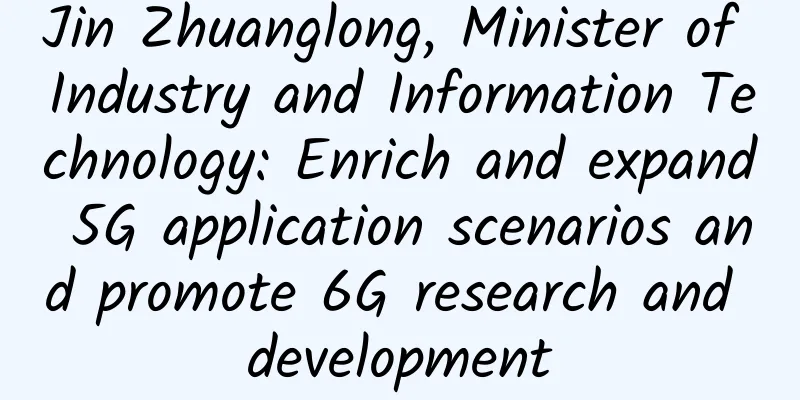vRAN, C-RAN, O-RAN, OpenRAN, the love-hate relationship between Open RAN

|
This article is reprinted from the WeChat public account "Network Optimization Mercenary", the author is in correspondence. To reprint this article, please contact the WeChat public account "Network Optimization Mercenary". Open RAN is a general term for open RAN architecture, which includes open interfaces, virtualization, and AI intelligence. OpenRAN is a project initiated by TIP, which aims to realize open RAN, and its work scope includes 2/3/4/5G. TIP, the Telecom Infra Project, was initiated by Facebook in 2016 and currently has more than 500 members, including operators, equipment manufacturers, chip manufacturers, IT companies and system integrators. Among them, Vodafone, Telefonica, Deutsche Telekom, British Telecom, SK Telecom, Nokia, Intel and other companies are major members. Major TIP Alliance Members O-RAN generally refers to the O-RAN Alliance and the standards developed by the O-RAN Alliance. The O-RAN Alliance was initiated and established in February 2018 by five operators, namely China Mobile, AT&T, Deutsche Telekom, NTT DOCOMO and Orange. It was formed by the merger of the original C-RAN Alliance and the xRAN Forum. Among them, the C-RAN Alliance is mainly composed of Chinese companies, and the xRAN Forum is mainly composed of AT&T, NTT DOCOMO and other American, Japanese, Korean and European companies. The O-RAN Alliance consists of nine working groups (WGs), each responsible for technical research in different fields. WG1 is responsible for studying use cases and the overall architecture, WG2 is responsible for studying non-real-time RIC and A1 interfaces, WG3 is responsible for studying near real-time RIC and E2 interfaces, WG4 is responsible for studying open fronthaul, WG5 is responsible for studying open F1/W1/E1/X2/Xn interfaces, WG6 is responsible for cloudification and orchestration, WG7 is responsible for hardware white box, WG8 is responsible for software open source, and WG9 is responsible for open X-haul transmission. What is the difference between O-RAN and OpenRAN?Simply put, the O-RAN Alliance will develop standards to supplement the 3GPP standards; OpenRAN does not develop standards, but only promotes OpenRAN and refers to or adopts O-RAN and 3GPP specifications. vRAN, or virtualized RAN, as the name implies, aims to promote the software and programmability of RAN. Open RAN emphasizes openness, while vRAN emphasizes network function virtualization and software. vRAN started with 4G RAN with dedicated interfaces, and later gradually expanded to 2G/3G OpenRAN and 5G OpenRAN or O-RAN. C-RAN, or Cloud RAN, refers to vRAN built on cloud-native technologies such as microservices, containers, and CI/CD. The C in C-RAN also has another meaning - centralized, that is, the centralized deployment of CU and DU. What is the difference between O-RAN and 3GPP RAN architecture?As shown in the figure above, 3GPP R15 introduced a RAN architecture with separated CU and DU, and defined the E1 interface between CU-CP (control plane) and CU-UP (user plane), as well as the F1 interface between CU and DU. However, O-RAN further opens the fronthaul interface and introduces two new controllers, Non-Real-Time RIC and Near-Real-Time RIC, at the management level and RAN, and adds interfaces such as A1, E2, O1, and O2. SMO, Service Management and Orchestration, is similar to MANO in NFV. It is responsible for managing network functions and NFVI infrastructure. Its management interfaces and management contents are as follows:
Other interface functions:
RIC stands for Radio Intelligent Controller. As the name suggests, it realizes the automation and intelligence of RAN operation and maintenance by introducing AI. Non-Real-Time RIC refers to the non-real-time part, which is responsible for processing services with latency requirements greater than 1 second, such as data analysis and AI model training. Near-Real-Time RIC refers to the near real-time part, which is responsible for processing services with a latency requirement of less than 1 second (50ms-200ms), such as wireless resource management, switching decisions, dual connection control, load balancing, etc. The Non-Real-Time RIC is located in the SMO. It collects global relevant data from the RAN and application servers, performs data analysis and AI training, and sends the reasoning and strategies through the A1 interface and deploys them in the Near-Real-Time RIC. Near-Real-Time RIC is located in the RAN and is responsible for collecting and analyzing real-time information from the RAN, combining it with additional or global information provided by the Non-Real-Time RIC, and using the inference models and policies issued by the Non-Real-Time RIC to monitor and predict changes in network and user behavior in real time, and adjust RAN parameters in real time according to policies (such as QoE targets), including adjusting resource allocation, priority, switching, etc. For example, if it is predicted that the network is about to be congested, the Near-RT RIC will adjust network parameters in real time according to reasoning to prevent congestion. Near-Real-Time RIC contains multiple xAPPs. (Relationship between xAPPs and RAN functions) xAPP is an application that can be independently deployed by a third party. It deploys AI reasoning models and policies in it, and different xAPPs are associated with different RAN functions, making the RAN functional components flexible, programmable and scalable. In short, O-RAN introduces Non-Real-Time RIC and Near-Real-Time RIC. The two work together to actively optimize and adjust network load balancing, mobility management, multi-connection control, QoS management, network energy saving and other functions based on AI, ultimately achieving network intelligence and automation. |
>>: Microsoft: Open RAN is crucial to network cloudification and the two will eventually merge
Recommend
University of Nottingham Ningbo China: seamlessly connected to the world, with top 100 universities within easy reach
In September, when students of the University of ...
The Matter protocol is rising rapidly. Do you really understand it?
The topic we are going to talk about today is rel...
ACI's "hardcore security" is more eye-catching
[51CTO.com original article] According to market ...
Essential for operation and maintenance: automated script for batch SSH password-free login of Linux machines
During the operation and maintenance of a large p...
Live broadcast and fan interaction is popular! Yunfan Accelerator will show you the live broadcast and microphone technology behind it
Preface: With the continuous upgrading of bandwid...
SpartanHost Seattle E5 KVM restock, $8/month-2GB/30G NVMe/3TB/10G bandwidth/20G high defense
SpartanHost has restocked the DDoS Protected SSD ...
How is lisahost? Lisa host US dual ISP three network 9929 line VPS simple test
A few days ago, the tribe shared the product info...
CloudCone: CDN promotion starts at $4.5/year, including nodes in Hong Kong/Taiwan/Vietnam/Japan/USA
In March this year, the blog shared the informati...
Will modularization become the mainstream of edge data centers in the 5G era?
The world is moving from the 4G era to the 5G era...
In the era of the Internet of Things, how will smart hardware affect our lives?
In recent years, the Internet of Things (IoT) has...
Seven tips for choosing intent-based networking
In recent years, intent-based networking (IBN) ha...
Open wireless, unlimited sharing - Ruijie Wi-Fi supports 2016 Tencent Global Partner Conference
From September 22 to September 23, the 2016 Tence...
100 basic network knowledge popularization, read it to complete half of the network master
This article is about popularizing 100 basic netw...
my country's mobile internet traffic increased by 23.4% year-on-year during the Spring Festival holiday
Unlike in the past, affected by the epidemic, thi...
Can you really explain TCP's three-way handshake and four-way handshake?
What is TCP Before understanding the three-way ha...





![[Black Friday] DesiVPS: $17/year-1GB/15G NVMe/1.5TB@10Gbps/San Jose Data Center](/upload/images/67cabcf294ba3.webp)



